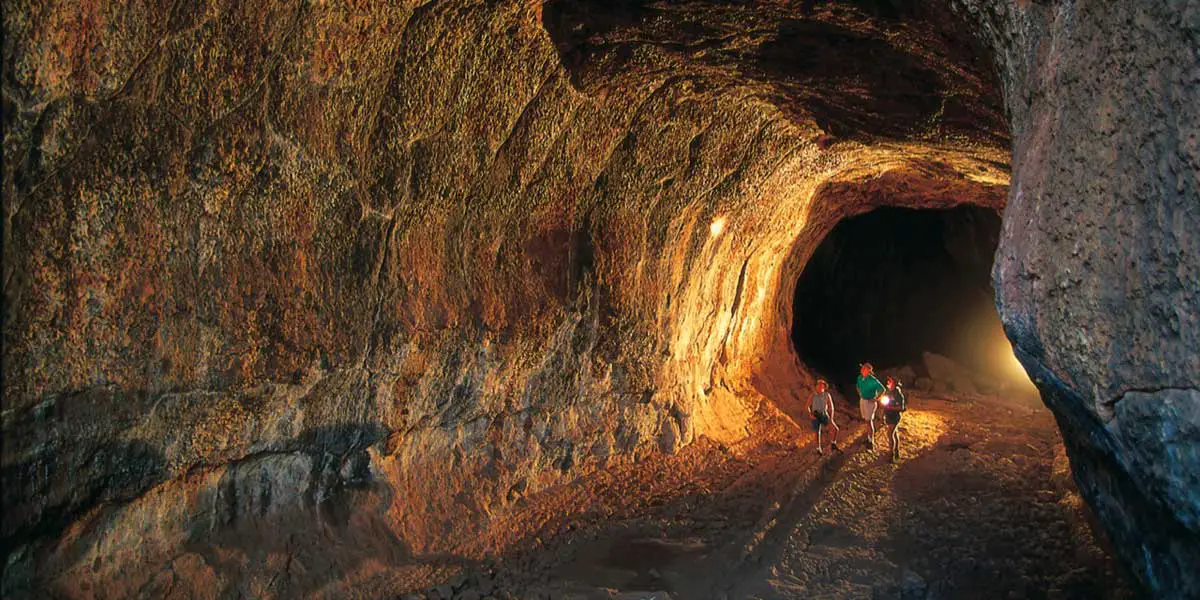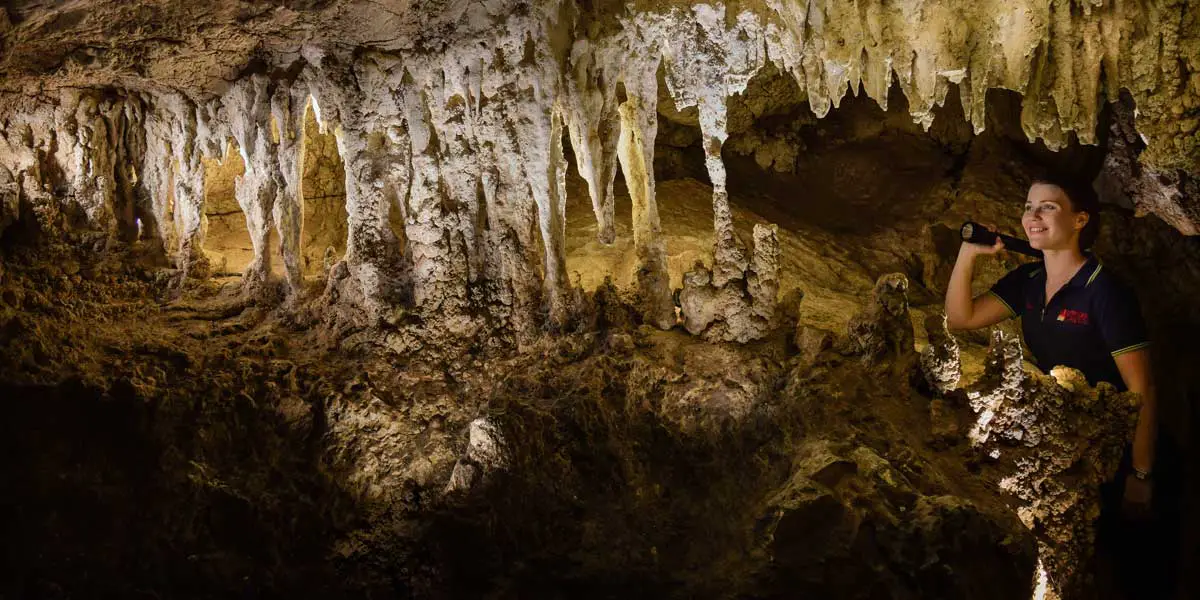
The Capricorn Caves are a unique system of above-ground caves in a limestone ridge situated 23km north of Rockhampton, Central Queensland. These ancient caves have been attracting visitors since their discovery by John Olsen in 1882. Today, they are the only privately owned show caves on freehold land in Australia. Tours range from easy walking, wheelchair accessible caves to wild caving adventure tours. Cathedral Cave Tour is the most popular with its wheelchair access and the amazing natural acoustics of the Cathedral Chamber. It’s a popular venue for weddings, Carols at Christmas and orchestral performances. The tour meanders through ten chambers ranging from smaller caves decorated with stalactites, cave coral and shawls to the huge domed Cathedral Cavern famous for its natural acoustics.
- More
- More
- More
- More
- More
- More
- More
- More
- More
- More
- More
- More
- More
- More
- More
- More
- More
- More
- More
- More
- More
- More
- More
- More
- More
- More
- More
- More
- More
- More
- More
- More
- More
- More
- More
- More
- More
- More

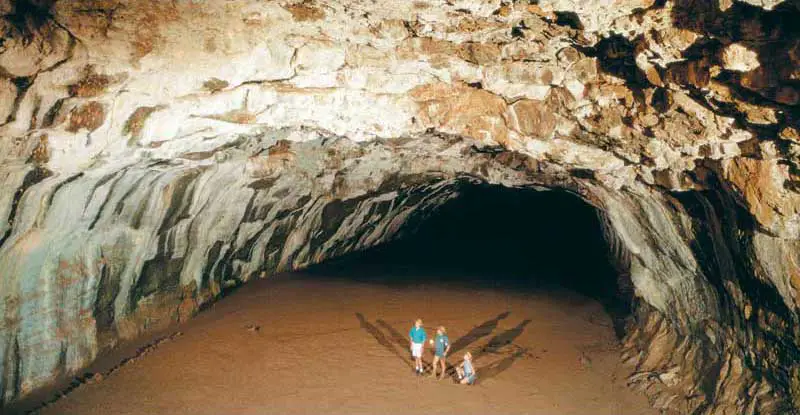
The Undara Lava Tubes (Undara Volcanic National Park) near the small town of Mount Surprise 275 km south-west of Cairns, is one of Australia’s great geological wonders. They are the largest, longest and most accessible lava tubes on earth. Undara volcano erupted 190,000 years ago and spewed 23 cubic kilometres of molten lava onto the surrounding country. Streams of sulphurous lava flowed over the land, spilling out like boiling treacle into various creek beds and other depressions. The surface soon cooled and crusted but the molten lava inside continued to flow, leaving behind the huge hollow pipes … the unique lava tubes.

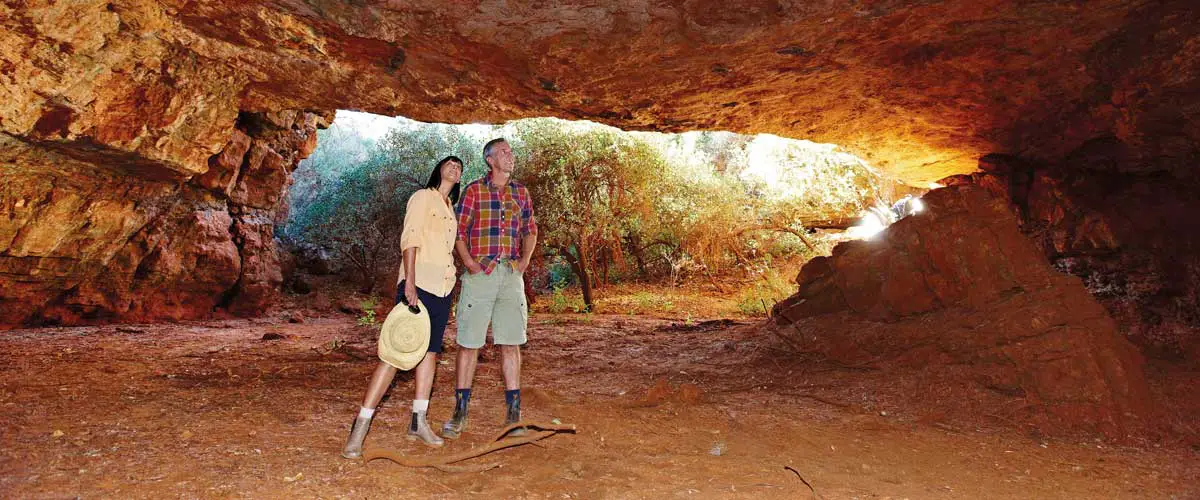
A large cave system that is growing larger each year with the soluble dolomite being continually eroded by the flooding during the wet season. The largest cave is the Great Nowranie: 290 metres long and 70 metres high, it is also one of the easiest to access. The caves are in fact sinkholes in the ground. Here, water has percolated through 500 million year-old layers of soluble dolomite creating caverns linked by vertical shafts up to 75m deep. Visitors should be extremely cautious around the edge of the sinkholes. Located in the Camooweal Caves National Park just south of Camooweal, which is on the Queensland side of the Queensland Northern Territory border.

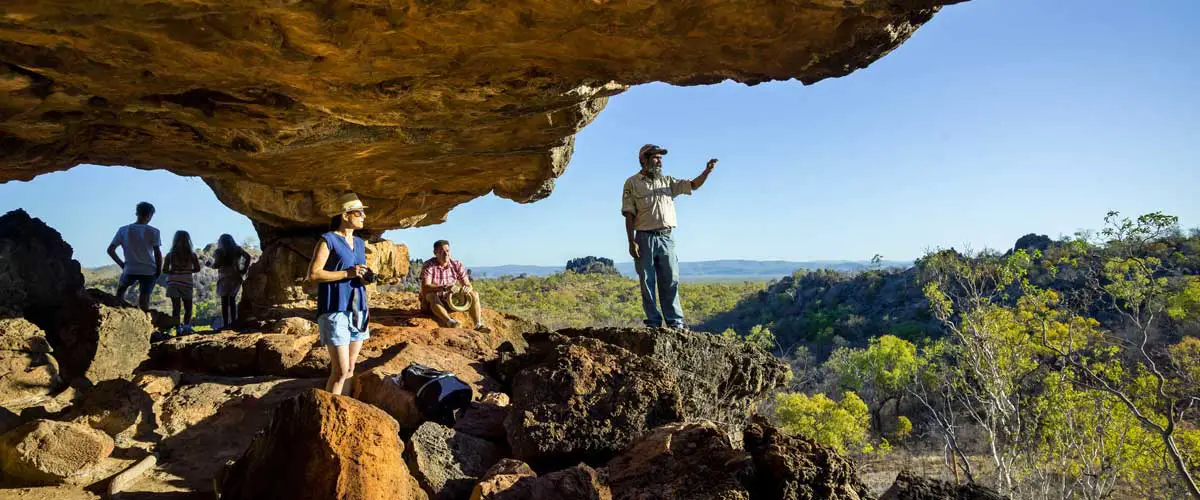
In an area characterised by volcanic activity it is surprising to find limestone caves, however the limestone in the area is the result of an unusual uplift of sediments (that include coral) which were deposited in the ocean off the edge of the Australian continent about 400 million years ago. As the sea level rose, the continental shelf moved east and then, about 360 million years ago the sediments were compressed and uplifted. Over 600 caves have been documented in the Chillagoe region, with the largest system claimed to contain over 6.5 km of passage. Every cave is different and names such as ‘The Cathedral Cave, or ‘The Piano Cave’, often give clues to what may be found within.

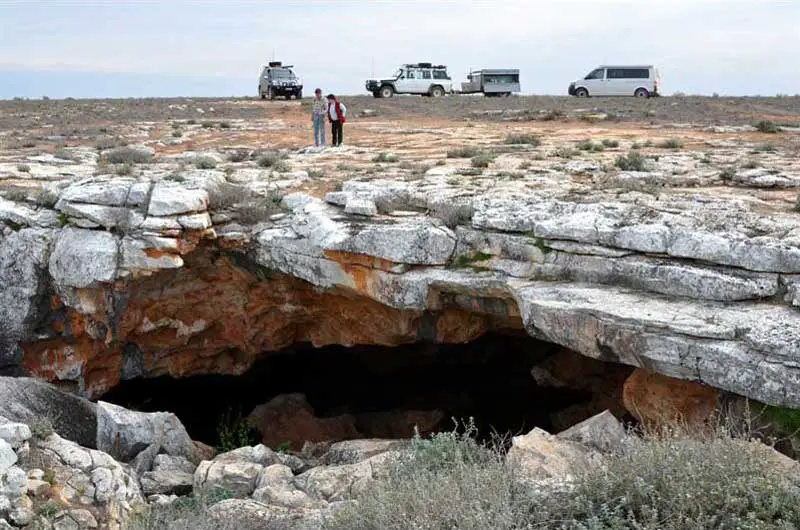
There are several caves across the Nullarbor, some with several kilometres of passages, and some approved for public investigation. The Murrawijinie caves north of Nullarbor, Koonalda and Bunaby Blowhole can be visited, and others are only accessible in the company of a National Parks and Wildlife officer. In recent years Cocklebiddy has gained an international reputation as a site for one of the world’s largest cave systems. Ten kilometres to the north west of Cocklebiddy Roadhouse lies Cocklebiddy cave. In 1983 a French caving expedition created caving history by exploring Cocklebiddy Cave to an unprecedented distance of 6.4 kilometres. The Cocklebiddy cave system is unique in that it extensively penetrates an aquifer that lies 90 metres below the Nullarbor Plain. Within Cocklebiddy cave are a number of vast limestone caverns, rockfalls and saline subterranean lakes that extend for several hundred metres.

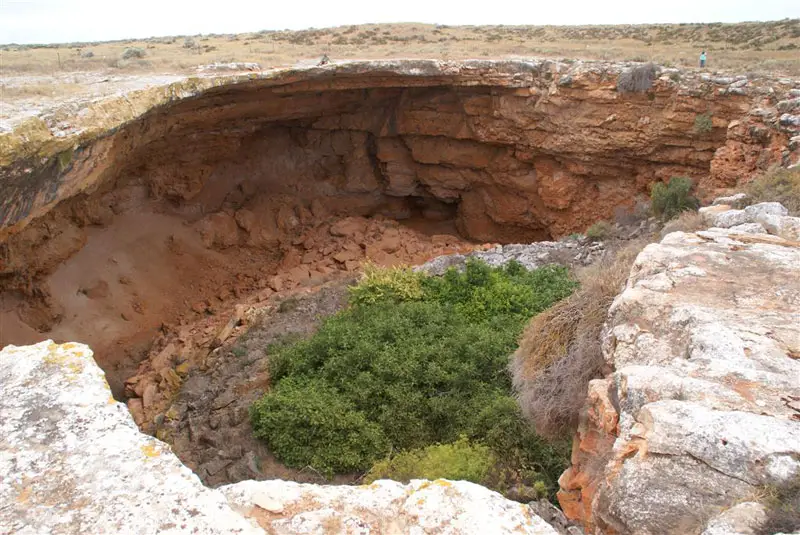
Koonalda is a limestone cave located in the Nullarbor Plain of South Australia near the Great Australian Bight. 19,000 years ago sea level was ninety meters lower than today. Because the sea was lower, Koonalda might have been one hundred eighty kilometers from the coastal belt rather then the edge as is its present day position. Also, because the cave may have been located nearly one hundred eighty kilometers from the nearest habitable region, Koonalda is thought to have been used for rituals. The cave are located on the western edge of South Australia, about 50 kms from the ocean.

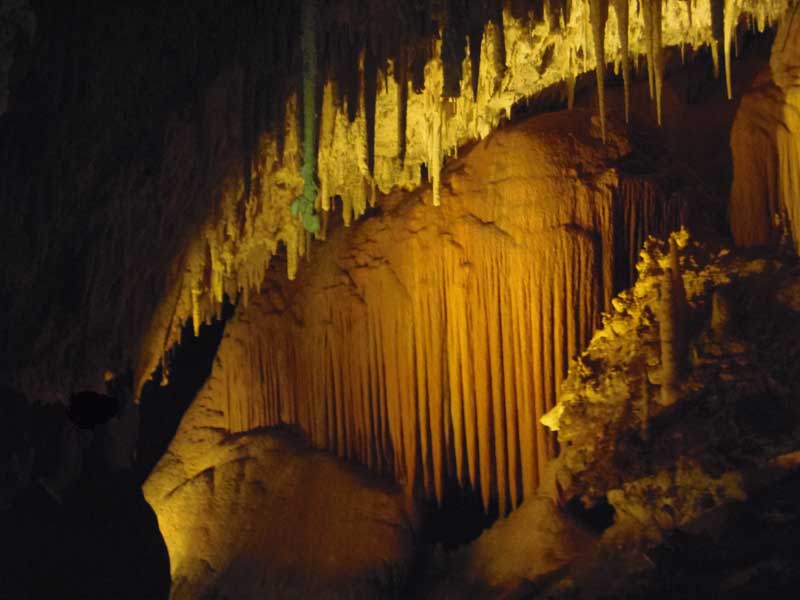
Jewel Cave organ pipes
The Augusta area boasts some of the most well decorated and longest caves in W.A. Covering an area over 16 km long from Cape Hamelin in the north to Cape Leeuwin in the south, the Augusta caving area contains a belt of coastal limestone consisting of Pleistocene deposits laid down during glaciation periods. Some characteristics of the aeolianite are sharp jagged limestone which has been greatly eroded by high rainfall, very heavy vegetation (Karri Eucalyptus diversicolor), heavy undergrowth and many speleological features and caves.

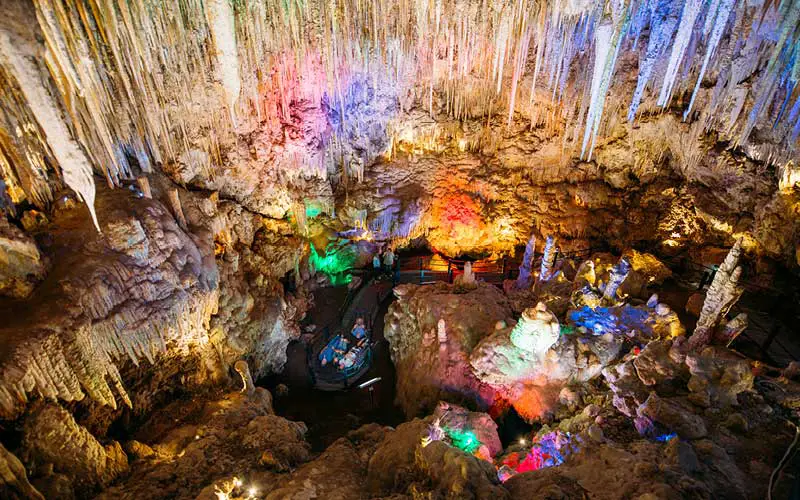
The Yallingup area in the south west of Western Australia has some of the thickest limestone of the Leeuwin Naturaliste Ridge, but despite this, very few large caves or extensive systems have been found, probably because there are very few streams to allow for the development of large systems. Ngilgi Cave is one that has been found and is well worth a visit. It is currently a tourist cave. The formations in this cave are excellent and there are several sections to visit. A short walk from this cave leads to Yallingup Gorge. Ngilgi is a local Aboriginal name given to the cave; a legend recounts the Dreamtime origins of the cave in terms of a vicious fight between a bad spirits that lived inside the cave and a good spirit Ngilgi who lived in the ocean. Whilst searching for stray horses, Edward Dawson discovered the cave in 1899. He began taking tourists through the cave in 1900. The tours were so popular that Caves House Hotel was built to accommodate the many visitors that would travel by horse and cart from Busselton. Today, the cave is open every day and tours are self-paced with guides available to answer questions.

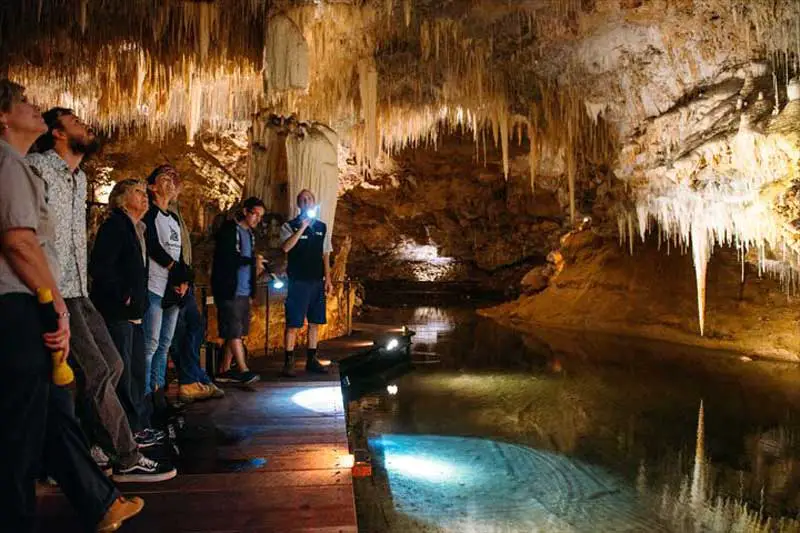
Lake Cave
A system of limestone caves are located in the Margaret River area, starting at Calgardup Brook and finishing at Ellensbrook. There is only a small karst area containing 20 known karst features of which a number are major caves. The finest among them are the stunning Mammoth and Lake and Jewell Caves. Few visitors fail to be impressed by the subterranean world they encounter on the Leeuwin-Naturaliste Ridge which also includes the Augusta and Yallingup Caves.

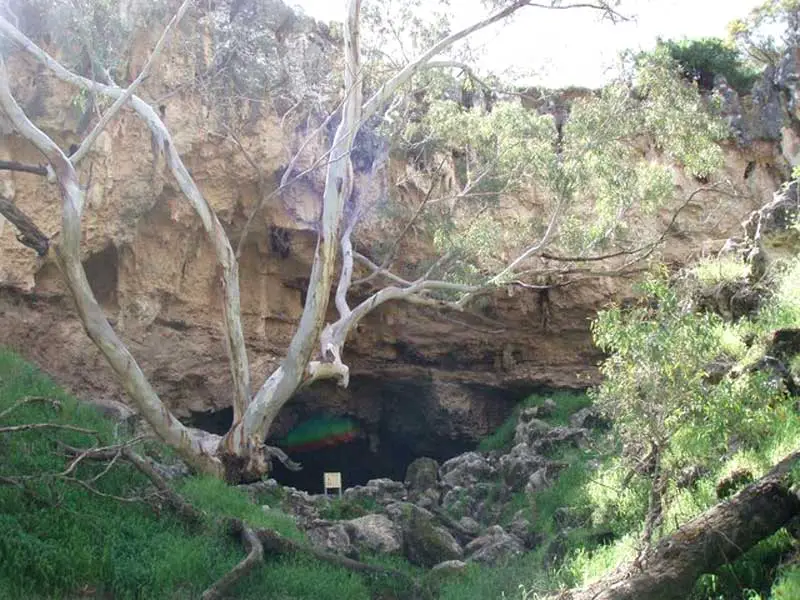
These caves, located near Eneabba, were created by an underground river system. Two of them are easily accessible – Stockyard Tunnel is 300 m long and requires no gear except for the torch; Stockyard Cave is 800 m long, but slime and mud often coats most of the boulders, making them extremely slippery. Aiyennu Cave boasts a sheer drop of 40 meters but is not open to the public. Unfortunately, none of these places are well developed for tourism; they can be accessed by four-wheel drive vehicle only.

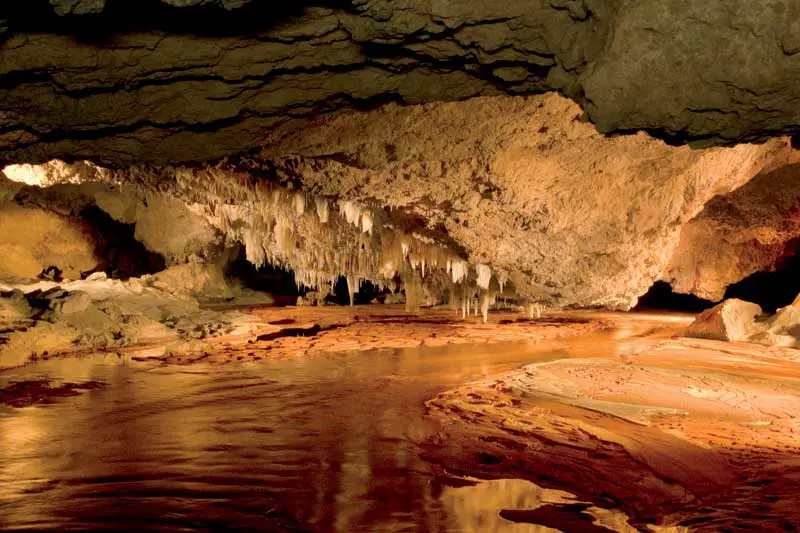
A series of caves are contained mainly within the Yanchep National Park beyond the northern extremity of the Perth metropolitan area. There is currently only one tourist cave in the National Park, namely Crystal Cave, though there is talk of reinstating Yonderup Cave as a tourist cave. There are also many ‘wild’, mainly small caves. The area has possibly as many as 1000 caves and karst features some of which are waiting to be rediscovered such as The Catacombs. As the limestone here is only 10m above the water-table, there have been frequent collapses.

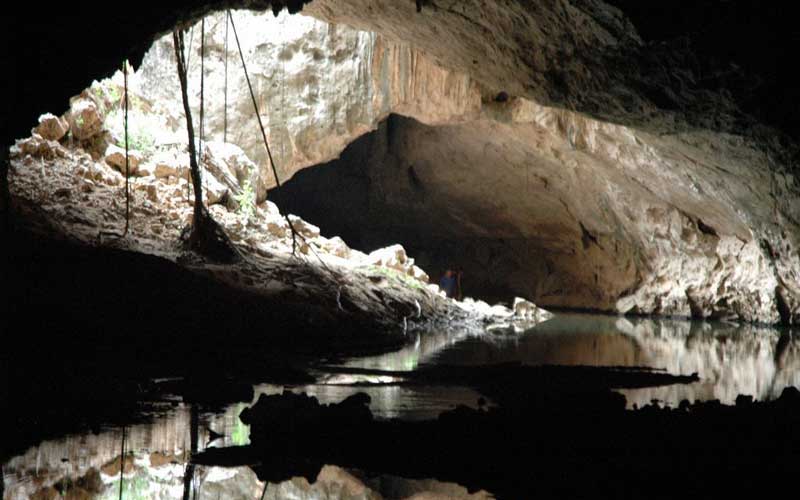
Tunnel Creek, situated 36km east of Windjana Gorge in Tunnel Creek National Park in the north of Western Australia, its takes its name from the 750 metre long tunnel carved by flowing water out of the limestone of the Napier Range, and is part of the 375 to 350 million-year-old Devonian Reef system. Western Australia’s oldest cave system, it is famous as a hideout used late last century by an Aboriginal leader known as Jandamarra. He was killed outside its entrance in 1897. Tunnel creek is, as the name implies, a tunnel, cut through one section of the reef by a small creek, with a collapsed roof in the middle. To pass through it to the other side of Napier Range, you have to wade through long waterholes up your waist and at times up to your chest.

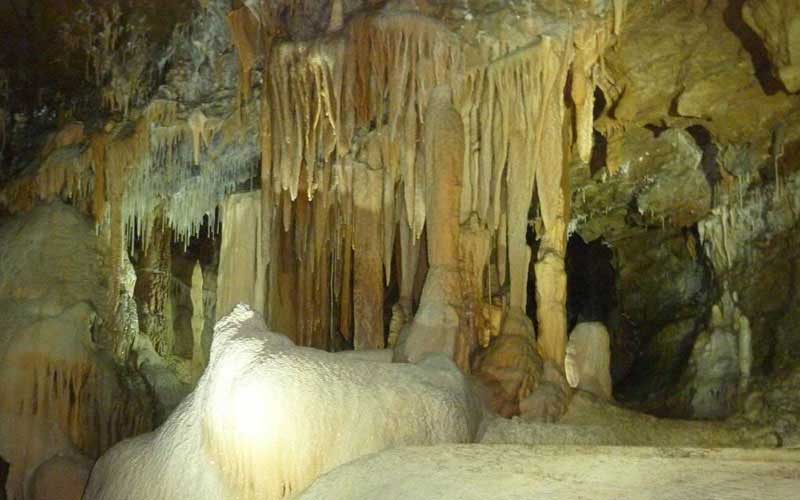
Near the township of Buchan, lies a honeycomb of caves full of spectacular limestone formations. Buchan Caves were formed by underground rivers cutting through limestone rock. The formations are created by rain water seeping through cracks and dissolving some of the limestone. The Reserve was established to cater to the needs of the thousands of visitors who visit the caves each year.

The cave is a granite boulder infill cave some 400 metres long with about 100 to 150 metres easily navigable (for a normal group, this can take up to 1 1/2 to 2 hours). During November to January there is often swift running water in the Cave and this adds to the Adventure. The expedition is always partly in water so appropriate clothing is essential. There are glowworms in the cave and although sometimes elusive, they can often be seen from early January to the end of Summer. There are also cave dwelling spiders, cave crickets and other insects and in Early autumn there are unusual Fungi in the cave. The cave is located in the Mt Buffalo National Park.

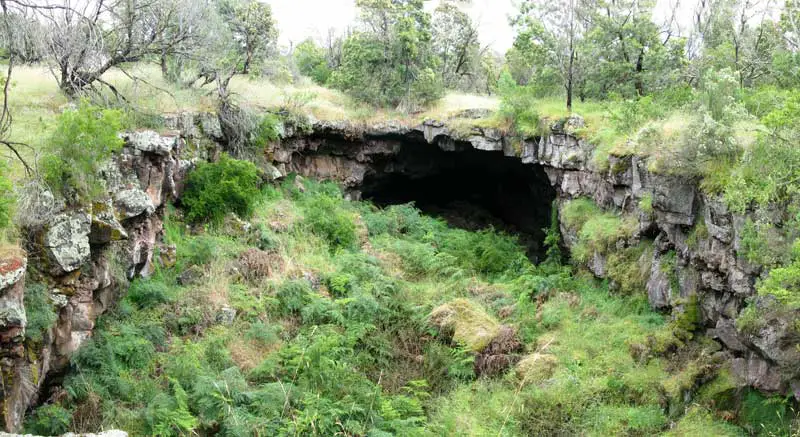
The caves are located in a lava flow stretching out 24km from Mount Napier to Mount Eccles in Victoria within the Mount Napier State Park and Mount Eccles National Park. The lava tubes contain wrinkles, stalactites and stalagmites, columns and ropy lava. Volcanic eruptions in this area began about 20,000 years ago and continued for the next 12,000 years. Only one cave of Byaduk Caves, Harman 1, is open to the public. Bent-wing Bats spend the winter in some of the caves hibernating. This caves are closed to visitors during the winter. Byaduk Caves are located 300km south-west of Melbourne, 45km south of Hamilton.

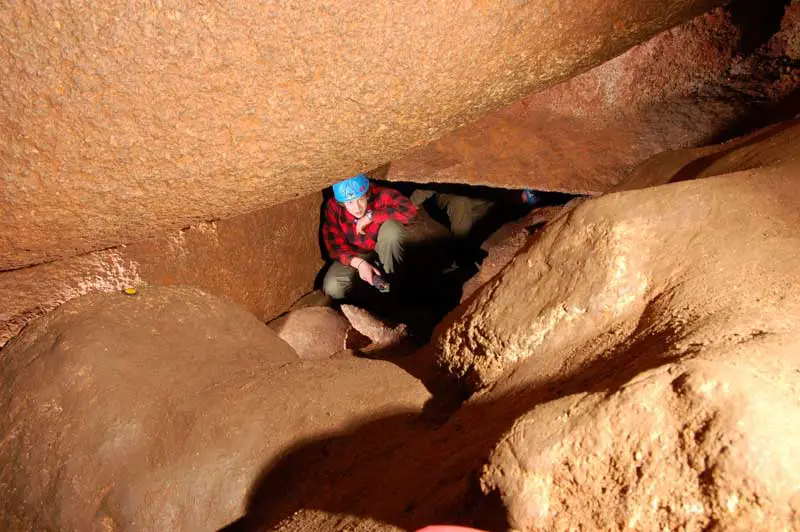
The Labertouche Cave, near Drouin, Victoria, are Granite Boulder Infill caves (which are rarer than Limestone or Lava Tube Caves, but well represented as a cave type in Victoria). This type of cave is formed when a large mass of granite weathers in such a way as to form a huge boulder jumble that has linked gaps between the boulders forming tunnels and caverns that are in total darkness and which can be navigated by competent Cavers. The caves have active streams and also limited cave ecology such as Glowworms, Spiders and Fungi. The caves are overlaid with sediment. <<

Britannia Creek cave is at Yarra Junction near Warburton, Victoria. It is a Granite Boulder Infill Cave (see Labertouche Caves above) which are rarer than Limestone or Lava Tube Caves, but well represented as a cave type in Victoria. The caves has active streams and also limited cave ecology such as Glowworms, Spiders and Fungi.

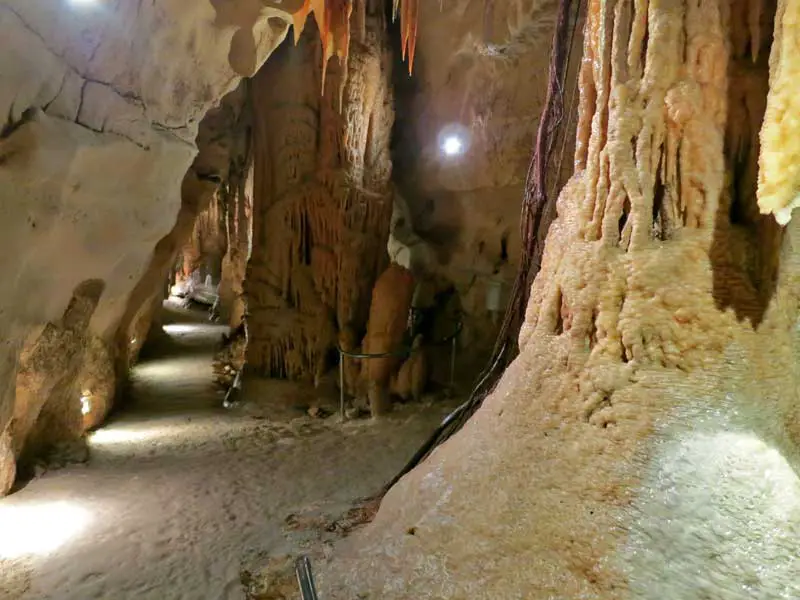
Of the many limestone caves in Lower Glenelg National Park, the main cave of the Princess Margaret Rose Caves is the most attractive and the only cave suitable for public use. It contains excellent examples of actively growing stalactites, stalagmites, helictites and other spectacular limestone formations. Most limestone caves are formed by water seeping down through cracks and faultlines in the limestone, dissolving the rock and creating fissures and tunnels. The formation of Princess Margaret Rose Caves, however, was assisted by water from the Glenelg River which worked its way along a faultline for 300m. This occurred above its present height. The water scalloped the walls of the cave and wore a reasonably level floor. Perhaps the most unusual formations in the cave are the helictites. Defying gravity, these long, thin formations grow in all different directions. Noone is certain how they form, but the are commonly accepted theory is that they begin on crystals and are shaped by surface tensions and air currents. Another mysterious formation in the Princess Margaret Rose Caves is the rarely seen cave coral.

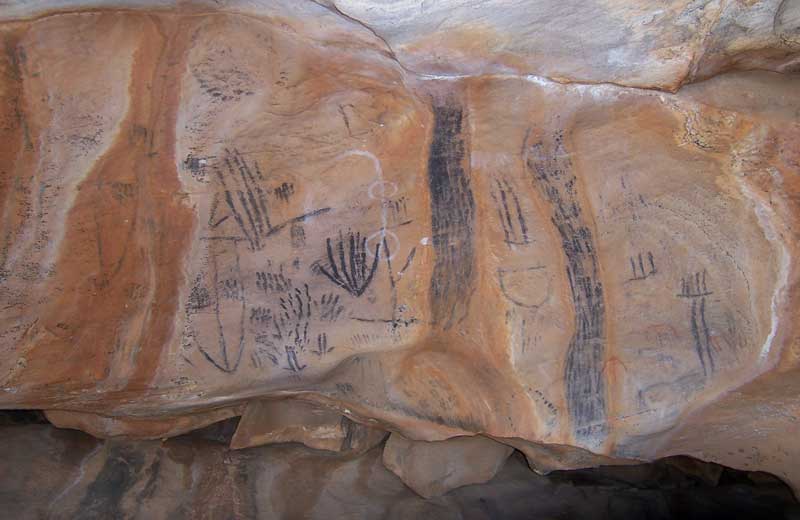
The name Yourambulla is derived from the Adnyamathanha phrase “yura pilla”, meaning two men, and is related to the two peaks to the east of the painting sites. In Adnyamathanha legend two men of different kinship, “arraru” and “mathari”, camped where the two peaks now stand, to eat part of a man they were carrying. It is thought that the smaller peak is the “mathari” man and that the larger the “arraru” man. A number of Aboriginal paintings and etchings occur in this area, and are housed in rock shelters and the caves accessible by marked walking trails. The caves and paintings are located 11 km south of Hawker off the main Quorn road.

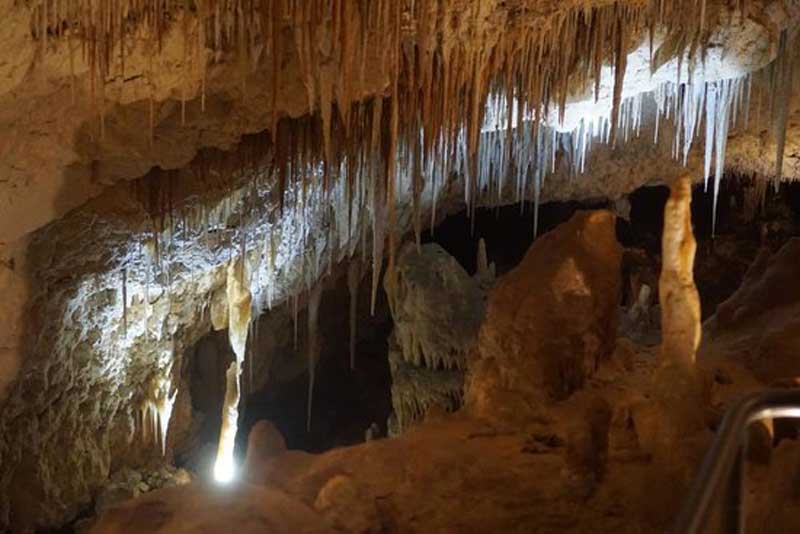
The Kelly Hill Caves on Kangaroo Island were discovered by accident in 1881 when a horse named Kelly fell into one. The caves are a beautiful system of caverns and sinkholes that are lit using fibre-optic “white light” technology. This allows visitors to see the stunning natural colours. Guided tours run daily, but the more daring can take an adventure caving tour for a deeper look into this underground world of ornate calcite formations. The original entrance to the cave system is still in use today for adventure tours of the cave.

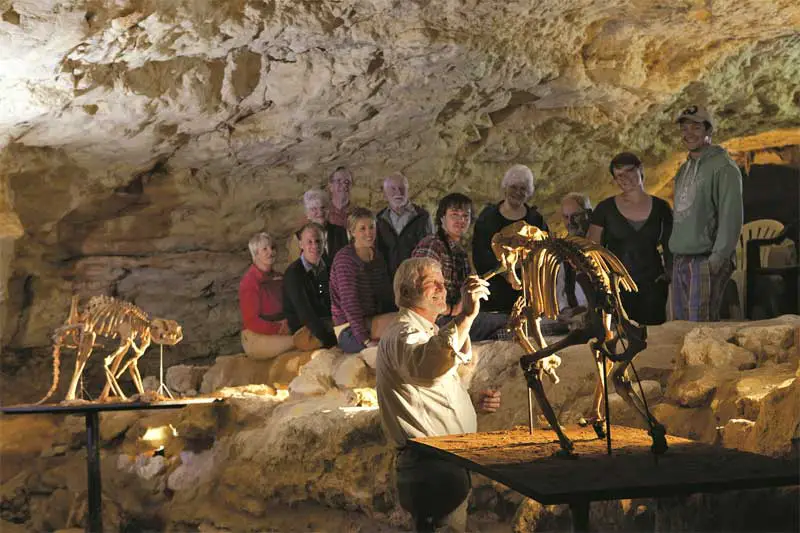
Naracoorte Caves National Park, South Australia’s only World Heritage Site (previously a Conservation Park), is located in the Limestone Coast region in the southeast of South Australia. The importance of the fossil record at Naracoorte Caves was officially recognised in 1994, when the site was inscribed on the World Heritage List. The Park preserves 600 hectares of remnant vegetation, with 26 caves contained within the 305 hectare World Heritage Area.

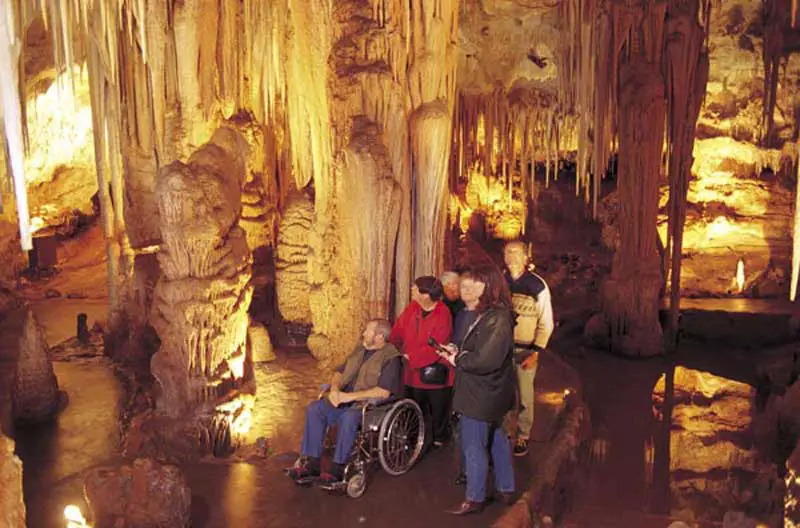
The Tantanoola Cave is located 16kms from Millicent on the Princes Highway in the South East region of South Australia. It is believed to have formed from thousands of years of warm seawater lapping the coast causing it to gradually dissolve away and separate the stranded cliff dolomite from the main land. It is the face of these cliffs that pounding waves helped to open up a large cavern known as Tantanoola Cave. Tantanoola is the only single-chamber pink dolomite cave in Australia and features easy access pathways, which are suitable for wheelchair and pusher access. The strategically placed lighting enhances the caves natural beauty. Open daily for tours. Entry fee applies.

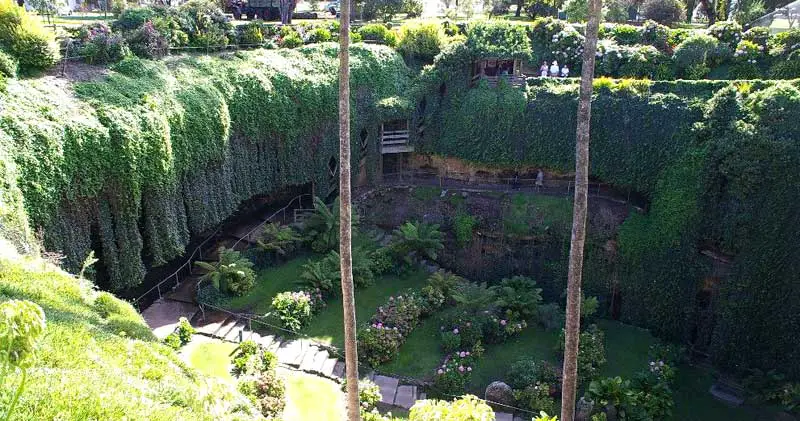
Umpherston Cave
In Mount Gambier there are several, easily accessible examples of caves. The easiest to find is Cave Gardens, right in the centre of town in the park opposite the Post Office. This scenic area has been landscaped around the main cave which was the site of early development in the town after the Henty brothers arrived in 1841. Umpherston Cave or Sinkhole, just east of the city on the Princes Highway, is limestone sinkhole named after James Umpherston, who was a foundation member of the Show Society and lived on a property nearby. Umpherston first established the gardens here. An interesting display on the steps leading into the cave explains its colourful history, and a Mack logging truck and an old bull-dozer are among logging displays in the beautiful gardens surrounding it.
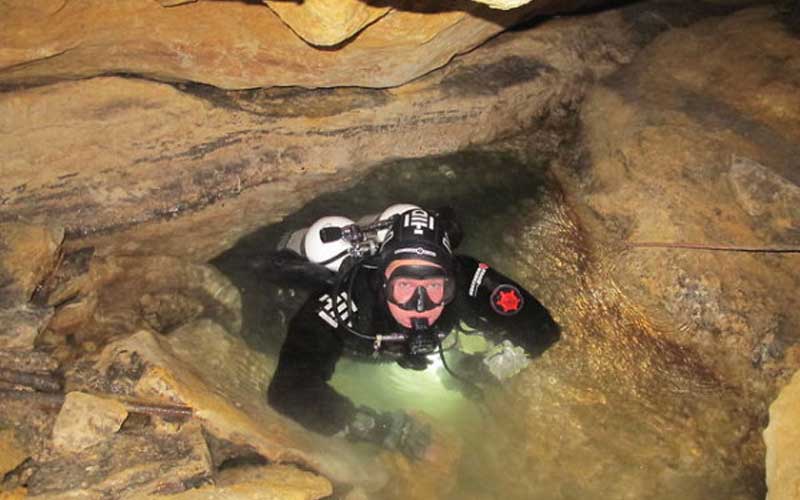
Engelbrecht Cave
Engelbrecht Cave on Jubilee Highway West, is open to the public. It is one of many caves beneath the streets of Mount Gambier, but is the only one that is accessible by divers. Tours operate daily to take you down to see where the divers enter the water to explore the water filled caverns. Engelbrecht Cave was formed in Gambier Limestone by the process of chemical dissolution. The Limestone itself was formed some 35-45 million years ago.

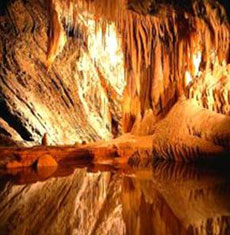
Marakoopa Cave
These caves are located close to the small rural town of Mole Creek in the Meander Valley, 23 km from Deloraine. On the slopes of the Great Western Tiers, the Mole Creek Karst National Park protects an internationally significant karst system renowned for its numerous spectacular caves. Marakoopa Cave is the larger of the two most accessible cave. It has a spectacular glow worm display. It is the only glow worm cave in Tasmania open to the public. The name “Marakoopa” is from the Tasmanian Aboriginal word for “handsome”. King Solomon Cave is slightly smaller, although still spectacular and more conveniently located. The cave was named for one of the formations, which visitors see approximately in the middle of the 40 minute tour. Both show caves are home to a range of fascinating animals adapted to the lightless environment.

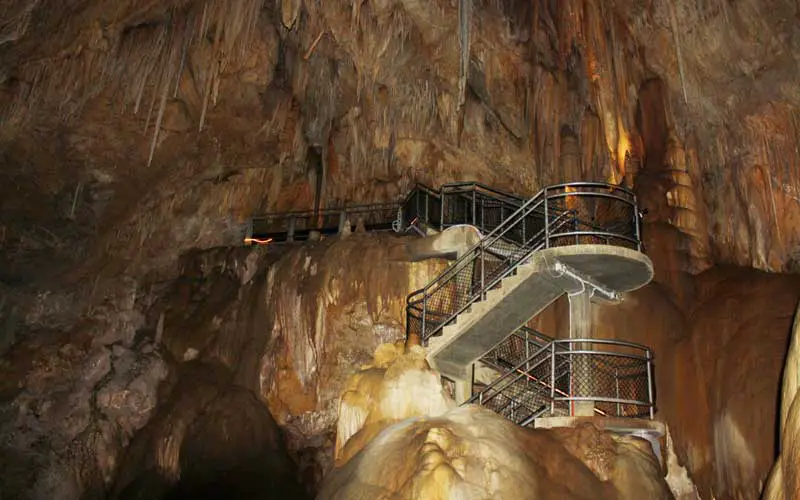
The Hastings Caves State Reserve offers visitors a variety of experiences, from relaxing in the warm waters of a thermal springs pool, walking in the rich forests of the reserve and, of course, the unique experience of exploring Newdegate Cave. Both the thermal pool and the trail which leads through the surrounding forests are accessible to wheelchair users. Named after Sir Francis Newdegate, the Governor of Tasmania from 1917-1920, Newdegate Cave is the largest tourist cave in Australia which occurs in dolomite, rather than limestone.

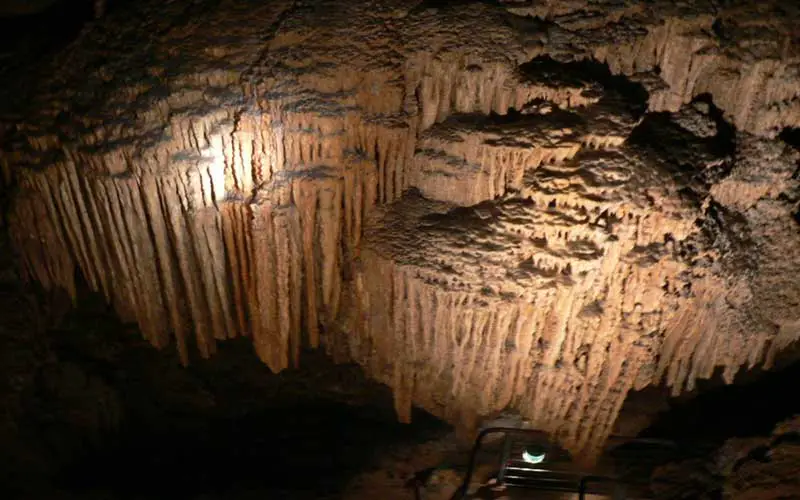
This limestone cave system is arguably one of the best and most accessible of the Tasmanian caves. These caves were formed by an underground river that still flows through some sections. Lofty chambers contain well-illuminated formations, some of which are massive. Guided tours of the cave system pass an underground river and feature glow worm displays.

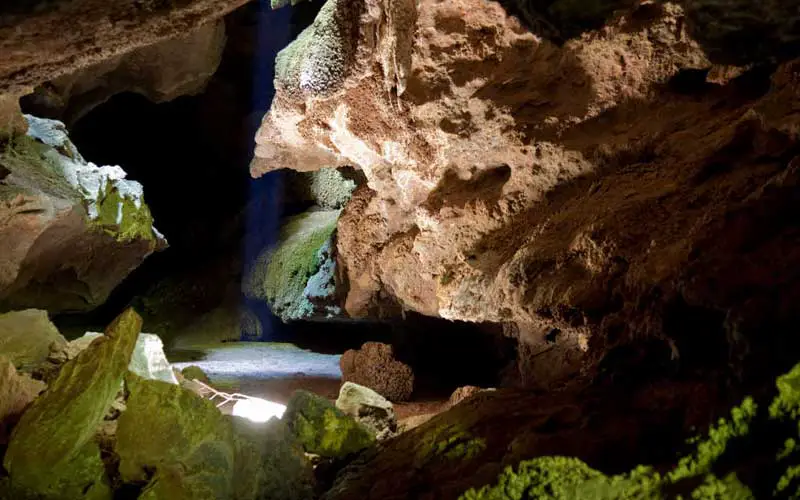
During the height of the campaign to stop the damming of the Franklin and Gordon Rivers (1981), an archaeological team went to the area to investigate reports of a cave (then known as Fraser Cave) containing aboriginal artifacts. They discovered deposits over 20,000 years old that marked the most southerly migration of humans during the last ice-age. The significance of the discovery was one of the reasons that led to the demise of the plan to dam the rivers. K

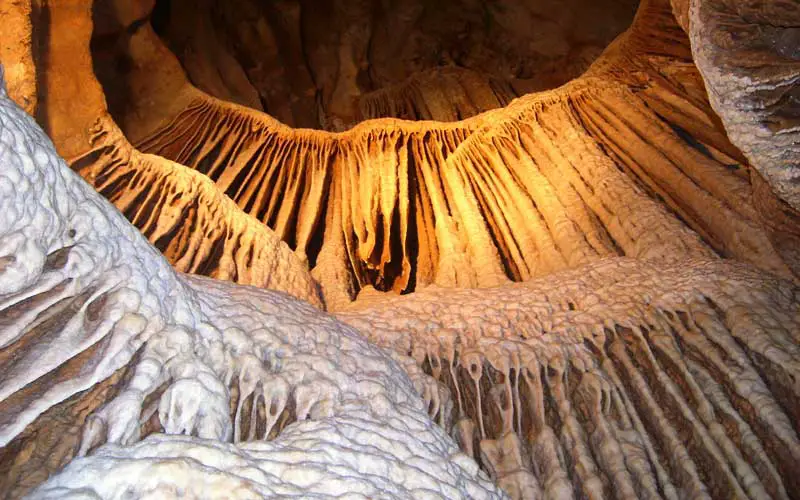
Jenolan Caves are without question, Australia’s most impressive limestone caves. Located near the Blue Mountains, the caves were discovered in 1838 by a convict bushranger. There are nine show caves open to the public with spectacular lighting, underground rivers and stunning cave formations. Tour guides take visitors through the caves; some caves are tougher than others. Jenolan Caves also offer adventure tours, picnic facilities and bush walking tracks. The acoustics of the Archway make any concert performed there a magical event. The drive to Jenolan Caves via The Blue Mountains is also a pleasant experience.

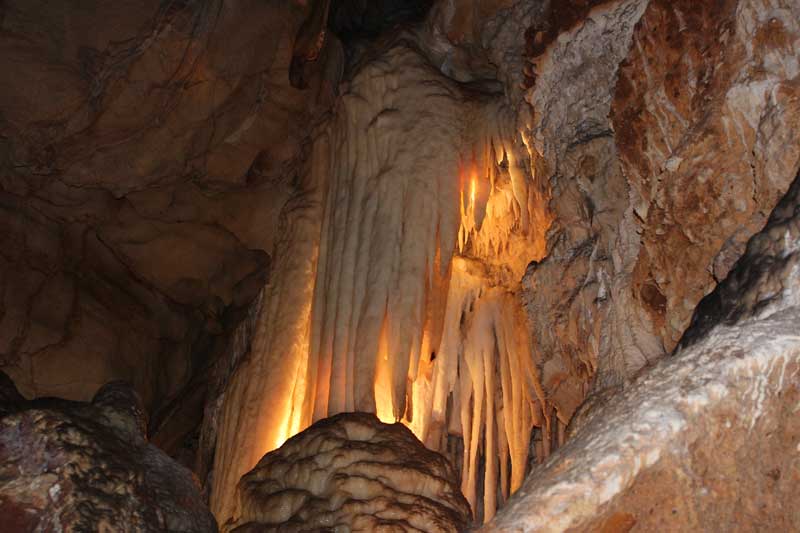
Hidden in the Southern Highlands of NSW is the natural marvel of Wombeyan Caves. The underground world of Wombeyan is easy to discover with the aid of an experienced guide iare well lit with clear pathways to follow. Figtree cave is Wombeyan’s magnificent self-guided cave. Wombeyan also offers the thrill of adventure caving in a wild cave, where crawling, climbing and squeezing. A less strenuous adventure involves stepping back in time to take a historical tour to explore by torchlight undisturbed passages in the footsteps of the explorers, seeing the magic of the cave as they did, more than a century ago.

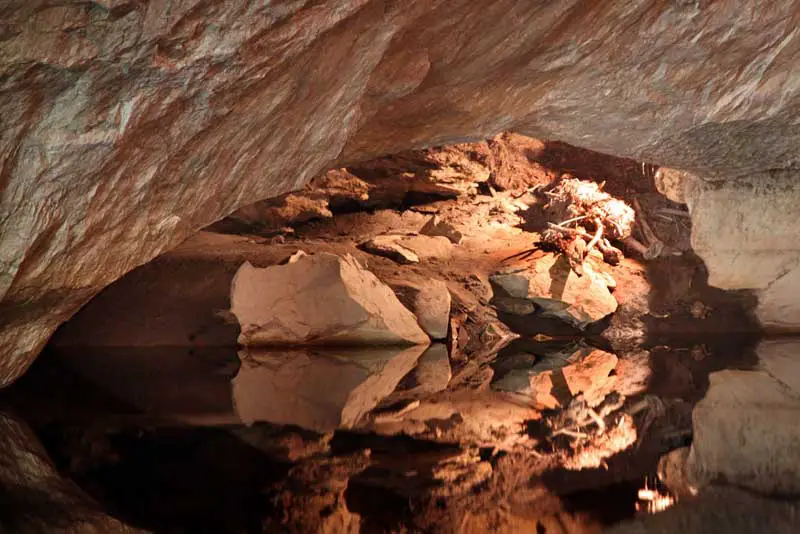
One of the first recorded references to this cave system was in the 6th October 1821 eddition of the Sydney Gazette, which mentioned “…a cave of considerable dimensions … near Bathurst”. Around this time local settlers and stockmen referred to a place known as the “Bridge” somewhere in the neighbourhood. The first European visitors to the caves appear to have been settlers and Bushrangers. The first recorded tourist party visited Abercrombie in 1834. However, the Caves were not officially discovered until 1842 by Surveyor W.R. Davidson.

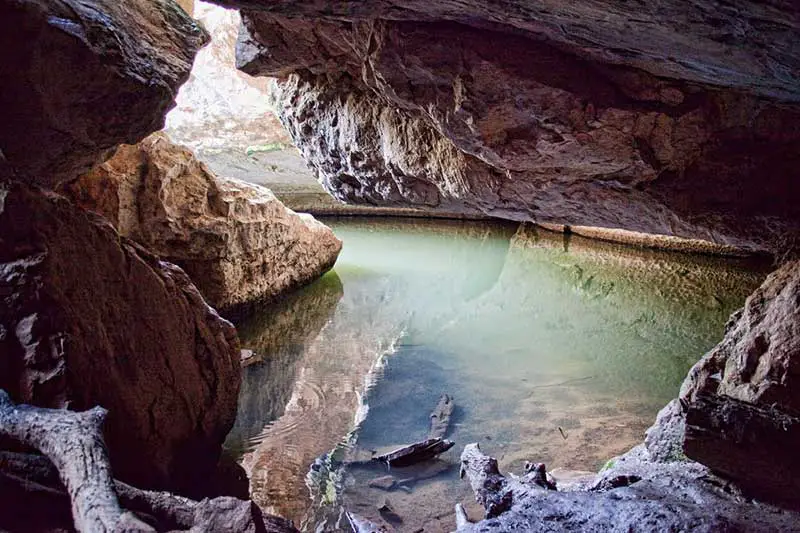
Forbes Road, Orange. These natural wonders located just 17 kilometres from Orange are ideal for a morning adventure, a midday explore, afternoon bushwalk or a day relaxing in the sun. These un-developed caves do not have guides or tours. The management of Borenore Caves was transferred to the care of the Jenolan Caves Reserve Trust in December 1997. Since the transfer, efforts have been focused on introductory meetings with stakeholders and general maintenance programs which have been undertaken by the staff of Abercrombie Caves and volunteer workers.

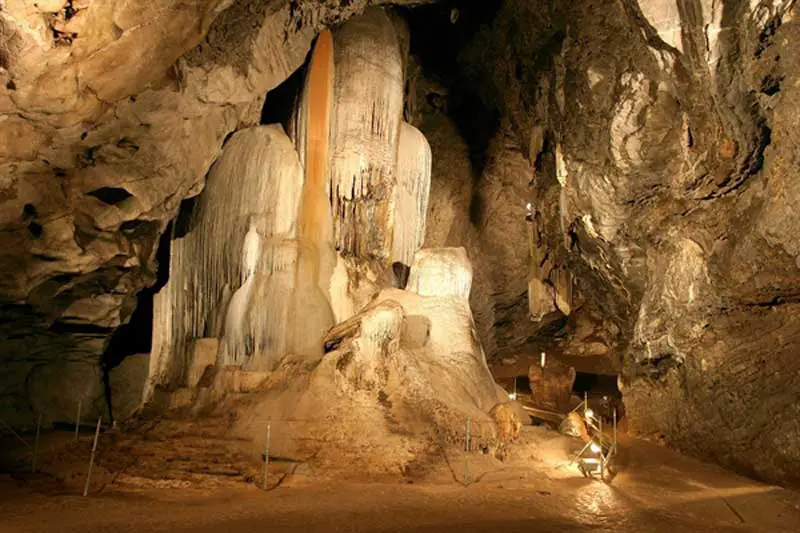
Wellington Caves are thought to have been discovered in 1830 by a colonist, George Ranken, who accidentally fell into the entrance of one of the caves. In one cave, now known as the Bone Cave were found fossilised skeletons of many giant animals which roamed the Wellington valley millions of years ago. It is now reserved for the exclusive use of scientists from all parts of the world. Today, the Cathedral Cave and the Gaden Cave are open for public inspection. The Cathedral Cave is a vast area where visitors are confronted by a truly gigantic stalagmite, regarded as one of the largest in the world. It rises to a height of about 15m and measures about 32m around the base. Illuminated by hidden lights, it has a majestic appearance and is popularly known as ‘the Madonna’. The Gaden Cave is smaller but has unusual and exquisite formations.

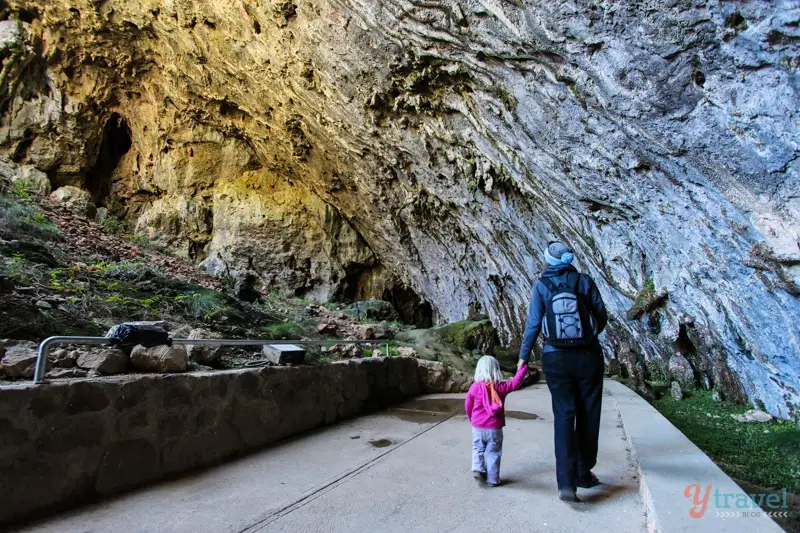
Located in the Snowy Mountains, these caves are worth a visit if you are ever in the area as they are some of the most beautiful caves in Australia. There are caves which can be self -guided or there are guided cave inspections such as the beautiful Jersey Cave, the wheelchair accessible Jillabenan Cave, (one of the most highly decorated caves in eastern Australia) or the immense North Glory Cave. The area has a rich Aboriginal and European history. As well as cave inspections undertaken with experienced guides, there are a number of short walks and the popular thermal pool for swimming.

Yessabah Nature Reserve covers 10ha and is located 15 km west-south-west of Kempsey in the lower Macleay Valley on the mid north coast of NSW. Yessabah Nature Reserve was originally set aside in 1890 as a reservation for Public Recreation and the Preservation of Caves. It encompasses a substantialportion of Yessabah Hill, an outcrop of the Yessabah Limestone Belt. The limestoneon the reserve has the highest concentration of caves in northern NSW, which are used for speleological and educational purposes. The Yessabah Caves are very important to the southernmost population of the little bent-wing bat in NSW and they provide the autumn-winter roosting site for a population of this species.

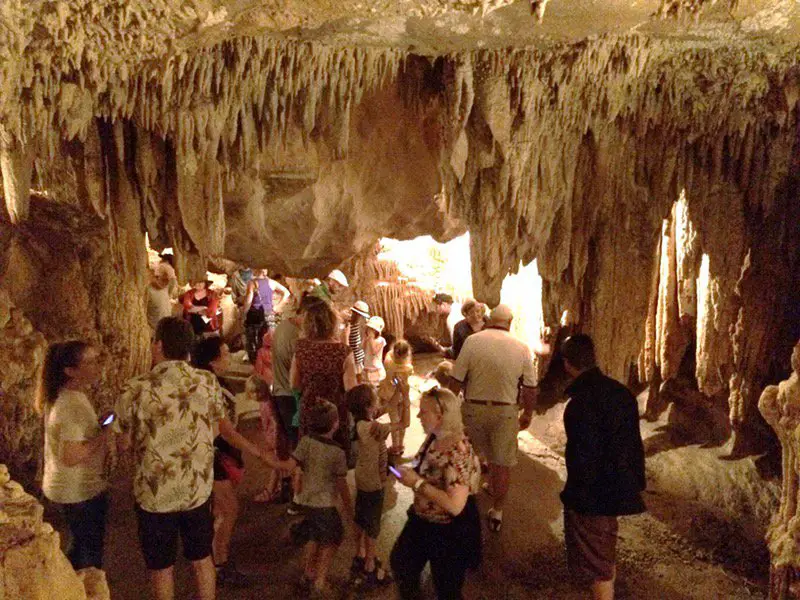
There are numerous limestone caves in the Wee Jasper valley, the best known being Carey?s Cave, which is open for inspection. It penetrates roughly in a horizontal manner into the side of a hill so even people with mobility problems can appreciate the charms of the caves. The cave is well lit throughout by electric lights and the guides are well versed in both the folklore and science of the caves. Number one priority of the Carey’s Cave guides is that you have a good time, irrespective of child, adult or non-English speaker. The Dip Cave is located 4.5km out of Wee Jasper. Tackle is required for the cave is 10m of ladder and rope as safety line. Dogleg cave requires no rope work, however this cave can flash flood during heavy rain. Punchbowl-Signature caves require a 40m rope and ladder for the 24m pitch in to the Punchbowl Cave.

These caves are to be found near the bank of the Shoalhaven River within 50 kilometers of Nowra. The caves are in Permian Sandstone (Nowra Sandstone, Shoalhaven Group) and are generally rift-like. They run approximately parallel to the cliff line and are no more than 15 m from it, in several places opening out onto the cliff face. It appears that large blocks have broken away from the cliff and have begun to move down the slope towards the river, but on examination of the relief of the two walls, it seems that generally there has been very little vertical movement, although horizontal movement averages about 1 m. The roof and any false floors were probably formed when smaller blocks were wedged into the rift.

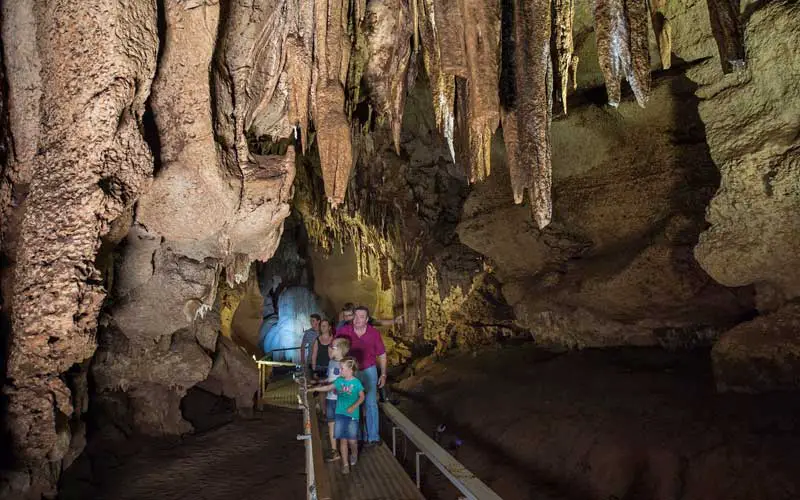
The caves were formed millions of years ago and still growing today, these fascinating limestone rock formations are about 15 metres below the earth’s surface. The landscape surrounding the caves is unique, featuring 2 interesting short walks in the area. Cutta Cutta and Tindal caves are home to a variety of wildlife, including the Brown Tree Snake and the rare Orange Horseshoe bat. The cave are located in the Cutta Cutta Caves Nature Park. Access is via the Stuart Highway 30 km south of Katherine.

Located about 45 kilometres south of Timber Creek, part of the Victoria River region and within the Gregory National Park, the Gregory Karst is in PreCambrian dolomite. Current information about the caves in the area followed a British led expedition in 1988. The karst is believed to extend some 20 kilometres north-south and up to one kilometre wide. With many outlying exposures that may still not have been explored and exposures along other rivers outside the Gregory National Park, the total length of known caves now exceed 150 kilometres. The Bullita Cave system, also known as ‘Burkes Backyard’. was the longest cave in Australia at 81 kilometres, with the length being added to by up to ten kilometres each year. With limited development of the Park and the rugged remoteness of the karst, casual cave exploration is not encouraged, with permission required from the Northern Territory Conservation Commission.

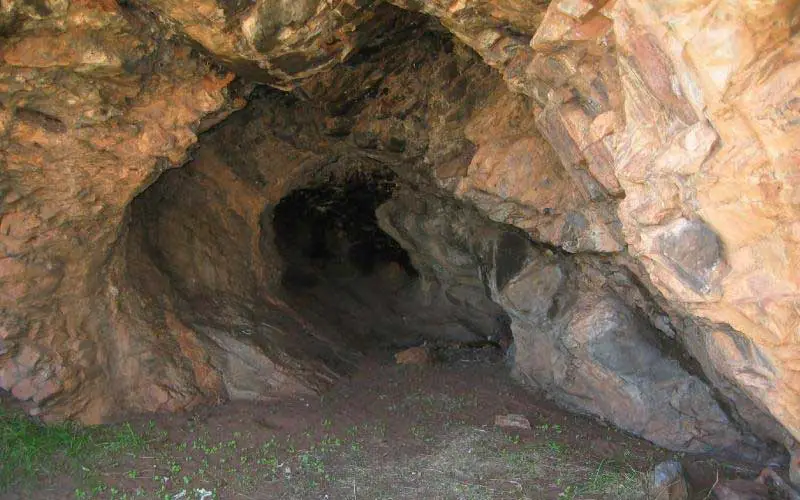
Lasseter’s Cave is situated on the Hull River. Its name recalls Lewis Harold Bell Lasseter, a gold prospector in the area who became stranded when his camels bolted in the heat of summer in January 1931 leaving him with no provisions. He actually sheltered in the tiny cave alongside the running waters of the Hull River for 25 days waiting for his relief party to find him but when they didn’t come he set out to walk to the Olgas. He only carried 1.7L of water and made just 55 kilometres before dying.








